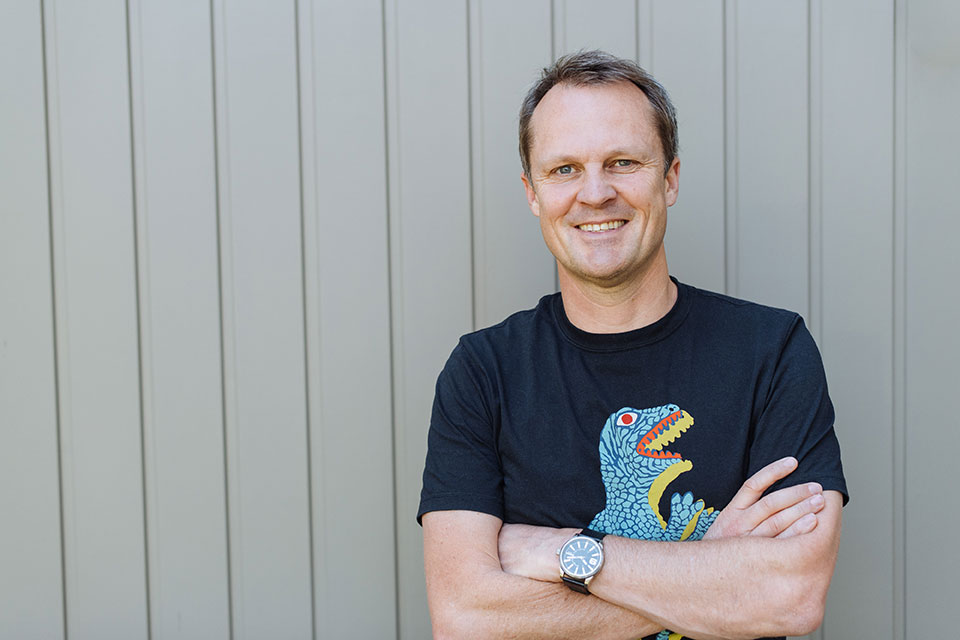6 tips for running a successful idea generation workshop: The perfect (brain) storm Part 2

In part one I shared five proven lessons and tips to help you design and prepare a successful idea generation workshop. You can read it here. In this final article of the two-part series, I share six proven lessons and tips to help you facilitate and run a successful idea generation workshop to create a set of high potential ideas.
1. Set the scene
It’s really important that you make everyone feel welcome, included and important. This starts by having tea and coffee on arrival and food and refreshments at breaks. It also includes a heart-warming and inspiring welcome from the project leader or sponsor.
Next it is important to get everyone into the right frame of mind and exhibiting the right creative behaviours—suspend judgement, understand and explore each other’s ideas, so you can then build on them and generate even better ideas. A quick creative state exercise (energiser) works well here.
2. Get the old ideas out first
People often come in with some ideas already formed (and if you’ve circulated the creative briefs this is something you want). If it is an internal innovation project (such as to redesign onboarding) some people might even have ideas that they’ve been sitting on for years. It’s important to give everyone time and space to get these off their chest first. This is critical because people are less likely to listen to and build on others’ ideas until they’ve shared their long-harboured ideas first.
3. Mini idea sprints
Next, we run parallel team idea sprints (a set of creative exercises) on each creative brief (opportunity area). For each creative brief I cycle through four steps or exercises to make up the idea sprint. The exercises I choose provide a good mix of individual thinking time and group brainstorming, so they cater to different personality and thinking types and increase the diversity of ideas. I also find you get the best results by starting with individual thinking time before progressing to group time. This allows everyone to jot down some initial ideas before having to share in a group. The idea sprint cycle is comprised of:
- individual mind map
- individual brainstorm
- team brainstorm
- team creative exercise.
The first two steps in the idea sprint help flesh out any ideas from the incubation time, as well as firing everyone’s brains up. Creating a mind map of all the thoughts and ideas they have for their first creative brief is a great way to start this. The mind map then becomes their stimulus for the next step.
The next step is an individual brainstorm, where participants using their mind maps as inspiration are set the task of generating a target number of ideas in a set time. For this step I love using the technique Crazy 8’s from Sprint by Jake Knapp, where participants are given five minutes total to sketch eight ideas. That’s only 40 seconds per sketch, which is crazy (and means they’ll have to turn off their own internal self-judgement).
The ideas everyone has come up with in the individual exercises are then taken into the team brainstorm where they can now share and build on each other’s ideas to come up with even more and better ideas. These are captured on sticky notes and posted on a whiteboard or butcher’s paper so everyone can see them and easily build on them.
After 10-15 minutes the teams will start to run out of ideas. At this stage I like to introduce a new creative exercise to look at the problem from a different angle and spark some fresh and more original thinking. Some of my favourites are ‘Best in World’ or ‘Break the Rules’. For example, you could come up with new ideas by ‘breaking the rules’ and challenge the status quo of the taxi industry. One ‘rule’ for the taxi industry was that you had to wait outside your location until the taxi arrived. Uber broke this rule through the development of an ETA tracking device on its App.
4. Select ideas for potential
Once you’ve completed your idea sprints it is time to harvest the ideas and select the top ones to take forward. I recommend selecting ideas for potential first and worry about feasibility later. Why potential first? Because you’ve got all these creative, unique and fledgling ideas from your incubation and idea sprints. If you then assess them with business-as-usual feasibility criteria, you’ll end up with the same old familiar and incremental solutions. This is partly because feasibility is a lens of what we can currently do, so therefore its more likely to favour more incremental ideas. By selecting ideas for potential instead we can then prototype and test them for feasibility and viability later in the innovation journey.
So, what do I mean by potential? I like to use criteria like:
- which ideas are most likely to successfully solve your creative brief (opportunity area)?
- which ideas are most likely to delight customers?
- which ideas are most breakthrough/innovative/disruptive?
5. Flesh out the top ideas into clear design briefs
You’ve now got your short-listed ideas, but they’re only really a handful of sticky notes with a few sketches and words. One of the worst mistakes to make is to stop there and come back to them in a day or two, after the team has dispersed, to write them up. You’ll find that really tough to do. You’ll wonder ‘Why did we vote for that idea?!’ or, worse still, ‘I don’t even know what that idea is!’
So, it is really important that you clearly capture and flesh out each of the top ideas and what they mean onto some kind of idea blueprint or canvas while they are fresh in your mind. You can download a copy of our idea canvas here.
At this stage it is a great opportunity to get each team to connect with another team in the workshop to both ‘sense check’ and ‘ask for builds’ on their idea canvases.
6. Showcase the top ideas
It’s always good to finish any workshop on a high. To bring the workshop to a close get each team to showcase their idea canvases. Then wrap up by sharing what the next steps look like and thanking everyone for their time!
Written by Nathan Baird.
Have you read?
Best Business Schools In The World For 2022.
Best Fashion Schools In The World For 2022.
Best Hospitality And Hotel Management Schools In The World For 2022.
Best Medical Schools In The World For 2022.
Add CEOWORLD magazine to your Google News feed.
Follow CEOWORLD magazine headlines on: Google News, LinkedIn, Twitter, and Facebook.
This report/news/ranking/statistics has been prepared only for general guidance on matters of interest and does not constitute professional advice. You should not act upon the information contained in this publication without obtaining specific professional advice. No representation or warranty (express or implied) is given as to the accuracy or completeness of the information contained in this publication, and, to the extent permitted by law, CEOWORLD magazine does not accept or assume any liability, responsibility or duty of care for any consequences of you or anyone else acting, or refraining to act, in reliance on the information contained in this publication or for any decision based on it.
Copyright 2024 The CEOWORLD magazine. All rights reserved. This material (and any extract from it) must not be copied, redistributed or placed on any website, without CEOWORLD magazine' prior written consent. For media queries, please contact: info@ceoworld.biz
SUBSCRIBE NEWSLETTER








